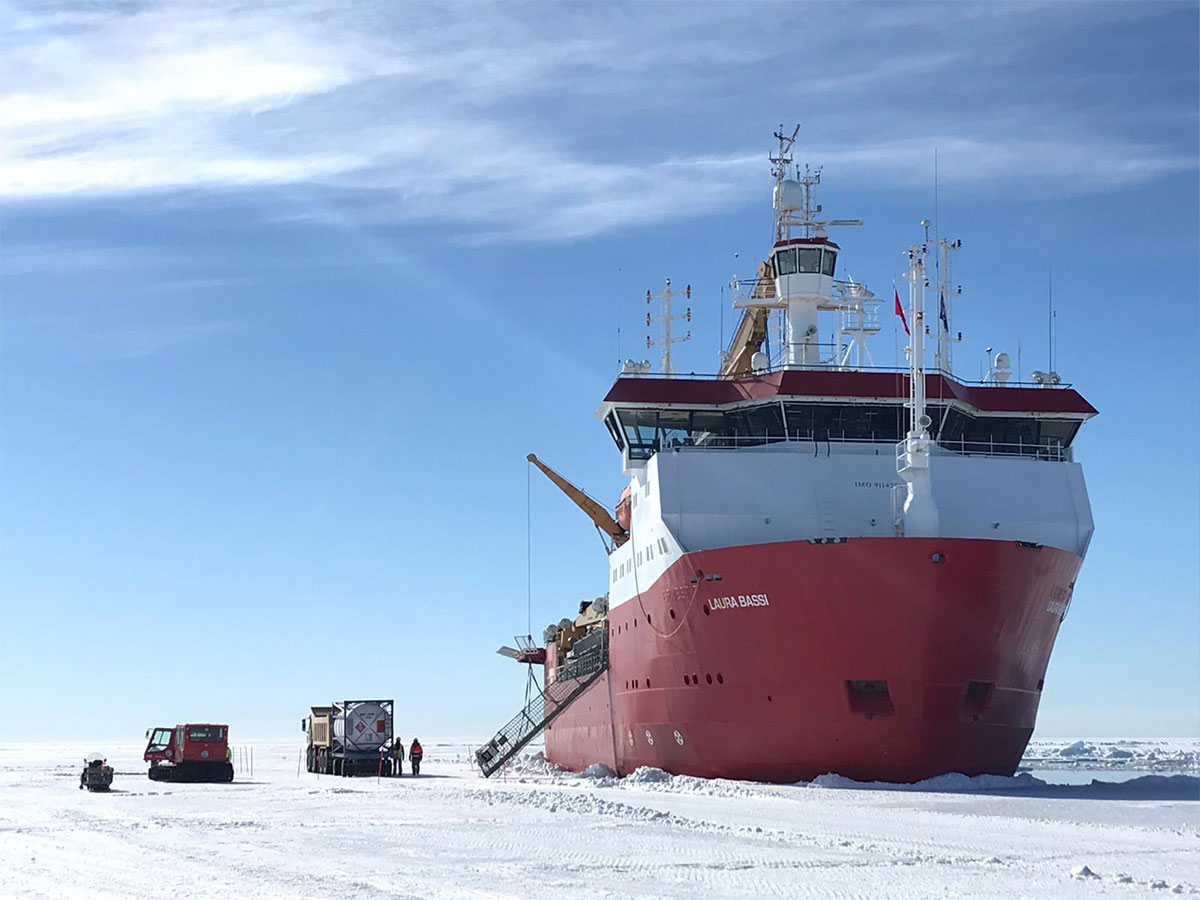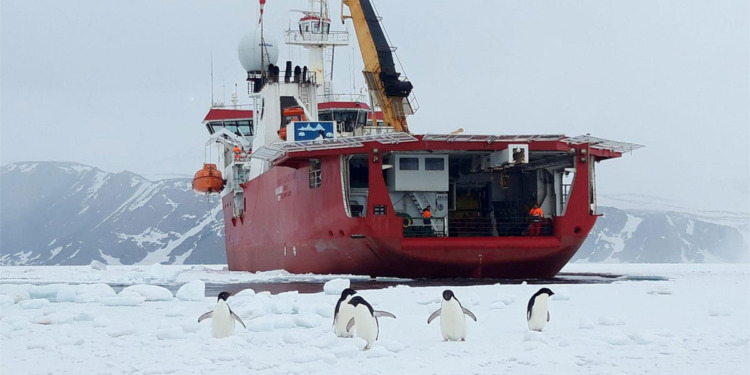An Italian ice-breaker ship that was carrying research scientists through Antarctica has managed to sail further south than any other ship ever before.
This is due to the fact that enormous amounts of ice — previously part of Antarctica — have melted, reducing land mass and increasing the distance that can be traveled via water.
The Laura Bassi vessel, named after the first woman to earn a physics university professorship in Italy in 1732, reached a point with the coordinates of 78° 44.280 S in the Bay of Whales in the Ross Sea, according to Italy’s National Institute of Oceanography and Applied Geophysics.

Images taken on satellites from last year show that ice is melting faster than ever predicted, as cracks in the glaciers are evident.
We hear time after time again that ice caps are melting, and it is easy to become desensitised to this information. But this is a new story, and not your typical climate change statistics on repeat.
The fact that this boat has arrived as far south as it has could be seen as a more comprehensible situation, as it is also linked to human capabilities (i.e., allowing us to explore previously unreachable parts of the world).
Related Articles: Climate Change In The Arctic For Dummies | Arctic Warming 4X Faster Than Rest Of The World
Although setting a new record as unique as this would normally be a positive development for humanity, the factors that allowed for it to be set in the first place are certainly not.
“I am happy with setting a record, but at the same time I am sad to see that things are really changing here in Antarctica and in the world in general,” Franco Sedmak, the ship’s captain, told Italy’s ANSA news agency.
He also said that a similar ship went on the same voyage in 2017, but could not get nearly as far due to the vast amount of ice, Reuters reports.
“I never thought that I would find such a melting of the ice after a few years to be able to go as far south as we managed this year, helped by pushing and being a bit daring,” Sedmak said.
The satellites that found cracks in the glaciers have also discovered that the rate of melting is unnatural, and too fast for nature to replenish itself.
The rate of ice loss over the past 25 years is double that of what was previously estimated, and the pace is only picking up in speed.
Singapore is one of the most vulnerable countries to be affected by Antarctica's melting Ice Bergs leading to rising sea levels & potential floods!#risingsealevel #globalwarming #risingtemperature #urbanflooding #sustainablity #meltingicebergs #antarctica #savetheearth pic.twitter.com/K4RRRijAiK
— The Climate Warrior (@TheClimateWarSG) February 11, 2023
Since 1997, Antarctica’s ice shelves have been reduced by a mass of 12 trillion tonnes.
The extra water that is of course the byproduct of the melting ice is causing sea levels to rise and cover — once again — double the amount of land by the end of the century than previously estimated.
Scientist Chad Greene said that Antarctica holds 88% of the sea level potential of the entire planet’s ice. So a melting Antarctica is devastating.
Ice shelves, which are floating sheets of fresh water attached to land mass, take thousands of years to form. These shelves prevent glaciers from spreading into the sea and causing the rise of sea levels.
However, it is the ice shelves themselves that are now melting. They are being weakened from underneath due to the rising temperature of the oceans.
Satellite altimeters have documented 149 million tonnes of reduction in shelf size between 2002 and 2020, according to NASA.
Although breaking records are usually considered positive achievement, it is safe to say that this new record of a ship reaching further south than ever before should be taken as a warning.
It’s a celebration of the courageousness of Captain Sedmark and his team, but the fact that this was even possible is a sign of the unstable future the oceans may bring us.
Editor’s Note: The opinions expressed here by the authors are their own, not those of Impakter.com — In the Featured Photo: Italian National Institute of Oceanography and Applied Geophysics’s research vessel Laura Bassi. Featured Photo Credit: Italian National Institute of Oceanography and Applied Geophysics.










